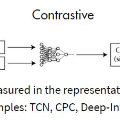Recommender systems, which analyze users' preference patterns to suggest potential targets, are indispensable in today's society. Collaborative Filtering (CF) is the most popular recommendation model. Specifically, Graph Neural Network (GNN) has become a new state-of-the-art for CF. In the GNN-based recommender system, message dropout is usually used to alleviate the selection bias in the user-item bipartite graph. However, message dropout might deteriorate the recommender system's performance due to the randomness of dropping out the outgoing messages based on the user-item bipartite graph. To solve this problem, we propose a graph contrastive learning module for a general recommender system that learns the embeddings in a self-supervised manner and reduces the randomness of message dropout. Besides, many recommender systems optimize models with pairwise ranking objectives, such as the Bayesian Pairwise Ranking (BPR) based on a negative sampling strategy. However, BPR has the following problems: suboptimal sampling and sample bias. We introduce a new debiased contrastive loss to solve these problems, which provides sufficient negative samples and applies a bias correction probability to alleviate the sample bias. We integrate the proposed framework, including graph contrastive module and debiased contrastive module with several Matrix Factorization(MF) and GNN-based recommendation models. Experimental results on three public benchmarks demonstrate the effectiveness of our framework.
翻译:分析用户偏好模式以提出潜在目标的建议系统是当今社会不可或缺的。 合作过滤( CF) 是最受欢迎的建议模式。 具体地说, 图形神经网络( GNNN) 已经成为CF 的一个新的最新技术。 在基于 GNN 的推荐系统中, 通常使用信息退出来减轻用户项目双部图中的选择偏好偏差。 但是, 信息退出可能会由于根据用户项目双片图随机地丢弃发出的信息而使建议系统的业绩恶化。 为了解决这个问题, 我们为一般推荐者系统提出了一个图表对比学习模块, 以自我监督的方式学习嵌入信息, 并减少信息退出的随机性。 此外, 许多推荐者系统会优化模式, 以对称排序目标, 如Bayesian Pairwithy 排名(BPR) 以负面抽样战略为基础。 但是, BPR 存在以下问题: 亚优度抽样和抽样偏差。 为了解决这个问题, 我们为解决这些问题, 我们为一般推荐者提出了一个图表系统提出了一个图表中的对比性损失图表模型, 提供了充分的负面样本和模型模型的偏差差化模型, 运用了我们提出的模型的模型的模型 。



